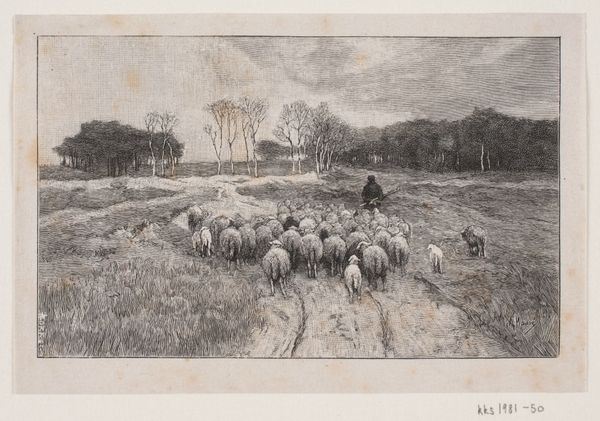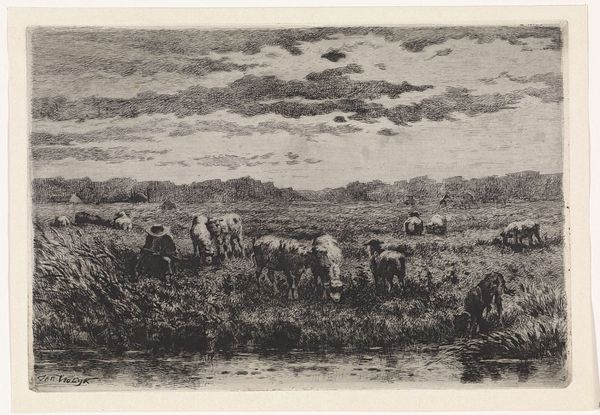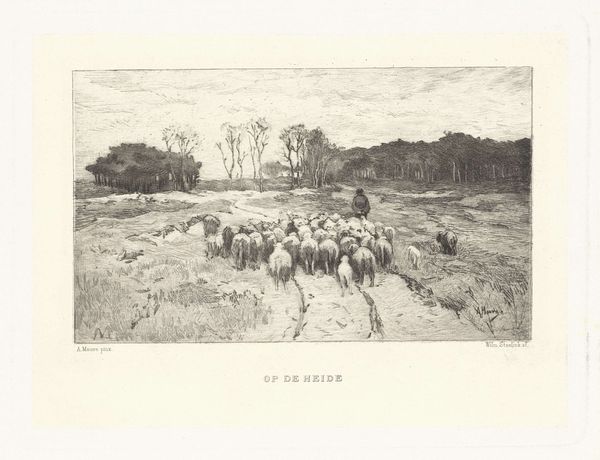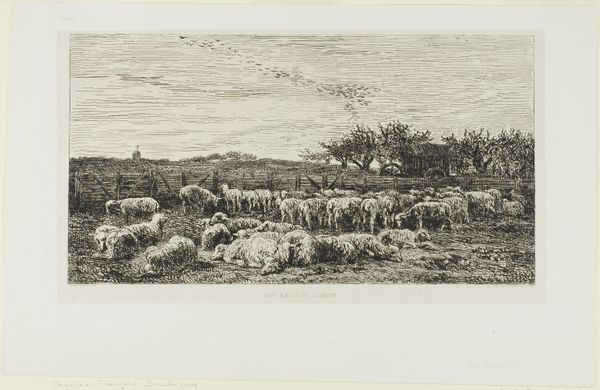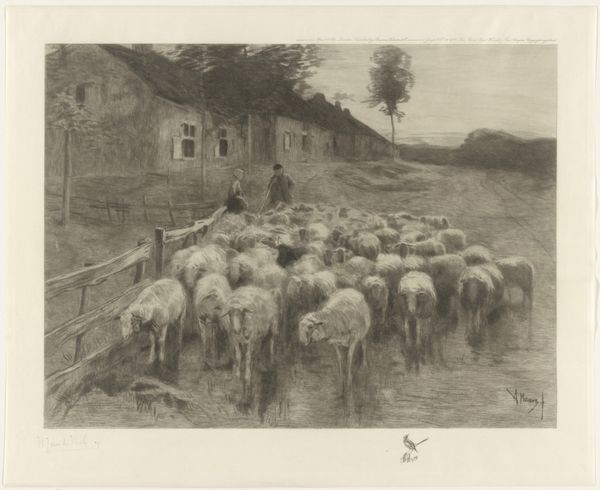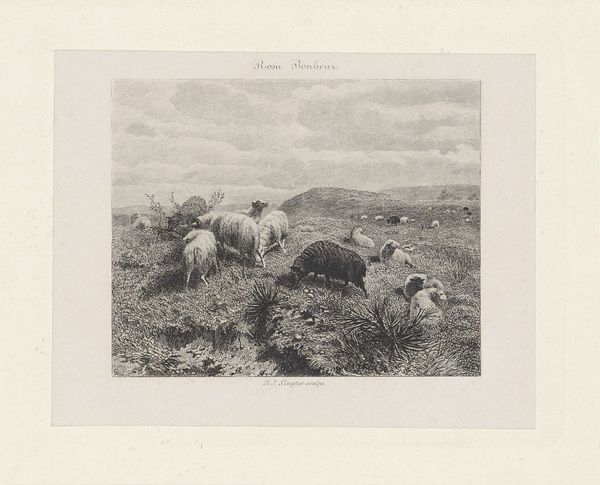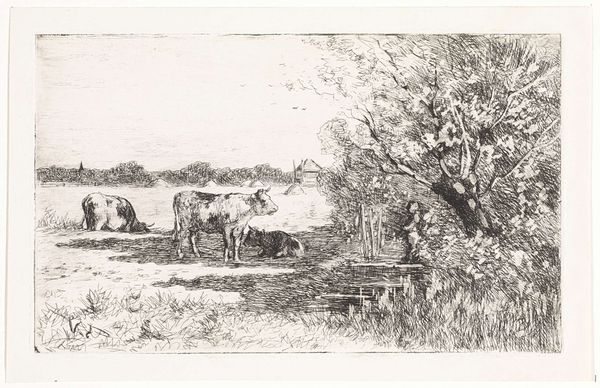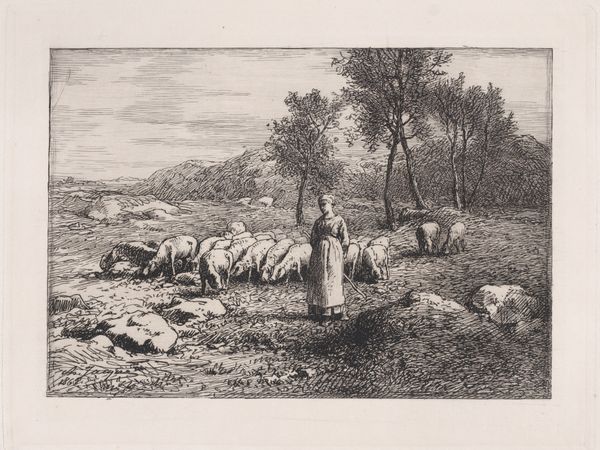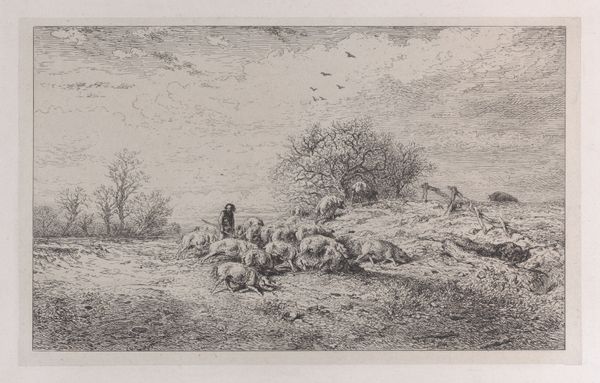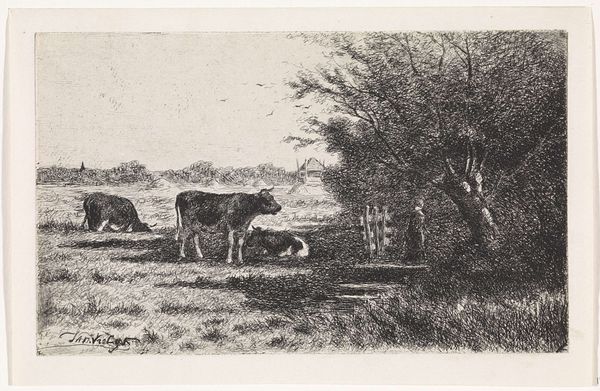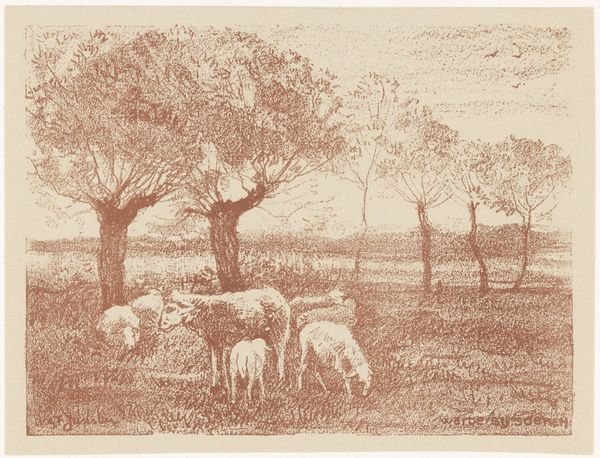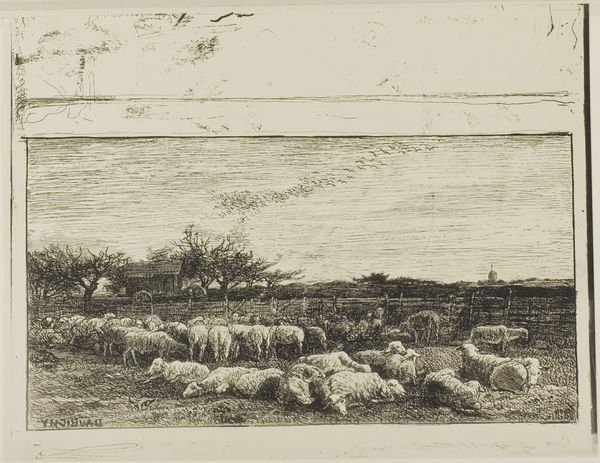
drawing, print, etching
#
pencil drawn
#
drawing
# print
#
etching
#
pencil sketch
#
old engraving style
#
landscape
#
charcoal drawing
#
pencil drawing
#
genre-painting
Dimensions: height 499 mm, width 714 mm
Copyright: Rijks Museum: Open Domain
Curator: Today we’re looking at Elias Stark’s “Schaapherder” or "Shepherd," created around 1889. This print utilizes etching techniques to depict a shepherd guiding his flock through a landscape. What is your immediate impression? Editor: A profound sense of melancholic solitude emanates from the monochromatic rendering of this seemingly humble landscape. The somber tone casts a shadow not just on the composition but also upon the social realities of rural existence during the late 19th century. Curator: Indeed, the composition adheres to traditional landscape structure, employing strong contrasts between light and dark. Note how Stark uses line and texture to define forms, especially the wool of the sheep. The figures are positioned within an organized spatial plane. Editor: It’s fascinating to analyze how this careful orchestration of shadow contributes to a narrative, albeit a somber one, that encapsulates the plight of pastoral communities confronting socio-economic changes during this period. This may touch upon issues of labor and identity. Curator: Can you elaborate on the formal techniques? Editor: The use of light is critical, obscuring the details of the background forest, drawing our focus to the backs of the herd and almost erasing the face of the shepherd in the gloom. Curator: Absolutely. Also note the rhythmic repetition in the lines composing the sheep themselves—it creates a sense of movement and cohesion throughout the flock. The artist clearly demonstrates proficiency in imbuing this genre painting with detail through the considered use of line. Editor: While I can see merit in that, considering the economic circumstances influencing agrarian populations at the time, one could easily read an element of critique against what Marx referred to as "the idiocy of rural life." Curator: An interesting juxtaposition. But for me, there is such aesthetic pleasure in studying the tonal range alone, quite apart from any ideological reading. Ultimately, this work offers multiple entry points to discussion, which is where its value resides. Editor: Agreed, the work leaves a haunting resonance regarding human interaction with the natural environment and the echoes of socio-economic struggle embedded in representations of pastoral existence.
Comments
No comments
Be the first to comment and join the conversation on the ultimate creative platform.
